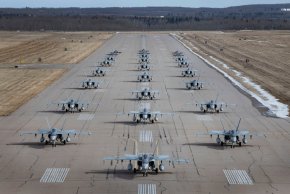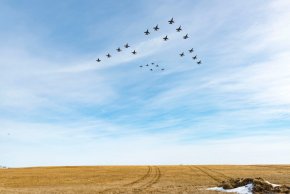And yet, Canada IS a NATO member-nation. Further, Canada is also a member of the NORAD joint command, meaning that barring a major reset of Canadian policy, non-alignment is not an option.
Yes, it is possible that Canada will select the Gripen E as the replacement for the F/A-18A/B fighters (it is not a "next gen" fighter though) due to the projected short-term costs if purchased from a Swedish production line.
OTOH though, the longer this procurement programme drags on, the less viable some of the selection choices become in terms of service life. A fighter design with a comparatively small user base, few of whom are members of NATO, will have less support in terms of maintaining compatibility with NATO and other allied systems. There are about ~24 Gripens in service between the Czech and Hungarian air forces which are both NATO members. If a new NATO or NORAD system comes out, Canada would likely bear the primary cost/tech burden to integrate such a system to Gripen, unless it was a system not restricted to NATO or NORAD members.
If Canada wishes to, it could of course take a short-sighted view and just make a selection based upon initial acquisition cost. IMO thought it would be far wiser to consider the longer term service requirements and both the whole service life costs, as well as costs over time. I specifically mentioned both as Gripen would likely no longer be viable for frontline service in contested airspace starting some time in the early to mid-2030's, which would likely be only a decade after their entry into RCAF service. This in turn would likely increase either the costs to operate to account for potential operational/combat losses, or force an earlier retirement for a fighter design that is appropriate for service today if it was already in RCAF service. However, since the Gripen E is not yet in Canadian service, or even any contract for such an order signed, IMO it would likely be several years before the first Gripen E could enter RCAF service. I do not know what Sweden or even Brazil's industrial capacity is to turn out Gripen E's but I would expect it would be at least two years from the date of the contract being signed before first delivery. Honestly I would not be surprised if the timeframe turned out to be closer to four or five years from contract signing to initial deliveries. Assuming a projected 20 or 25 year service life and initial deliveries starting ~2025, then the RCAF would be planning on operating the Gripen E until the 2045-2050 timeframe...





